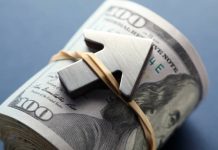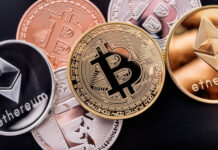Markets
We’ll move quickly over yesterday’s uninspiring day which lacked guidance from the eco calendar as well as from the US (celebrating 4th of July). German yields fell up to 3.9 bps at the front while adding 5.3 bps at the longest tenor. After Monday’s sell-off, UK Gilts marginally outperformed Bunds from the 5y tenor on with yields easing 2.3-2.9 bps across the curve. European stocks traded with a soft downward bias. The EuroStoxx50 finished 0.16% in the red. The euro underperformed G10 peers on currency markets. EUR/USD moved from 1.0912 to 1.0879 even as the dollar himself wasn’t particularly strong. On the other side of the strength barometer we find the cyclicals, including the Kiwi and Aussie (swapping post RBA losses for gains) dollar and the Norwegian krone. If anything, rising oil prices helped these commodity currencies higher too. Brent added 2% yesterday, closing at $76.25/b.
It’s an awfully quiet session in the Asian-Pacific region too. A setback in the Chinese services PMI (Caixin) adds yet another layer of doubt to the country’s hoped-for economic rebound (see below). The yuan dips after the data was released with USD/CNY trading in the 7.233 area. The US dollar in general receives a better bid with EUR/USD moving further south to 1.0869. DXY rises marginally to 103.19. A fragile risk environment, in part triggered by the Chinese data, helps explain the USD performance. Equities mostly trade lower for the day. Chinese/Hong Kong markets unsurprisingly underperform. US Treasuries reopen with small gains.
Today’s economic calendar contains some interesting events, including the publication of the FOMC minutes from the June meeting. The central bank kept rates steady back then but penciled in two more hikes for later this year as it first wants to assess the impact of the previously delivered tightening and the regional bank implosion. We’re keen to know about any other compelling arguments why the Fed thought it had to pause instead of just moving ahead. The ECB publishes its Consumer Expectations Survey, polling on future inflation. The questionnaire does get market attention, as we saw last month. Inflation expectations eased significantly in the April edition (published June 6), especially in the one year ahead gauge (from 5% to 4.1%, lowest since Feb 2022). That briefly triggered a downleg in yields and the euro. We think markets may particularly respond to another (steep) decline. But the latter is not a given. The series is volatile and tends to be correlated somewhat to what consumers pay at the oil pump. That would at least help explain the uptick in March and consequent decline in April, when (international) oil prices dropped almost 20% in the data collection period. Prices in recent months however, traded a tight sideways pattern.
News and views
Greek PM Mitsotakis yesterday said that his country will before the end of the year actually repay part of its bailout loans 2 years ahead of schedule. The repayments will be made under the umbrella of the Greek Loan Facility. That’s the first rescue plan consisting of IMF loans (already repaid) and bilateral loans from EU countries consisting of €52.9bn (€8bn of which already repaid). The PM, who won a new 4-yr term in office last month, calls it a commitment to investors and aims to regain an investment grade credit rating by the end of the year. Greece is currently rated BB+ both at S&P (positive outlook) and Fitch (stable) and Ba3 (two notches lower) at Moody’s (positive). “Not only are we focused on growth, but we also want to make sure that our debt to GDP ratio continues to decline at a very rapid pace.” The Greek/German 10-yr yield spread narrowed this year from around 200 bps ahead of the election to 134 bps currently. The 2021 low stands at 98 bps.
The Chinese Economic Information Daily says in a report citing analysts that China will step up monetary policies to support the continued recovery of the economy in the second half of the year. Options include structural loan tools such as increasing the relending and rediscount quota to aid small businesses and agriculture, lowering the Loan Prime Rate and another rate cut. An economic and monetary divergence between China and most of the rest of the world, harmed the Chinese yuan this year. USD/CNY recently set a YTD top at 7.27, closing in on the 2022 top at 7.33 (weakest CNY level since 2007). The June Caixin services PMI this morning fell from 57.1 to 53.9 (vs 56.2 expected) suggesting that post-Covid recovery momentum is waning.













